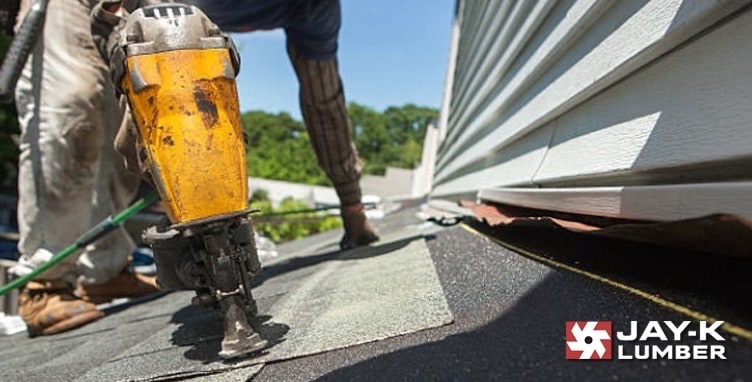How to Approach Roof Repair

Installing and repairing shingles to eliminate leaks
We have many requests for assistance with roof repair, from water leaks to damaged shingles, ice dams in the winter, and more. While we do have roof repair advice and products, our first recommendation is to make sure your roofing (whether it’s new or a replacement) is done correctly to prevent leaks in the first place.
Preventing Roof Leaks: Installation
Whether you’re doing the work yourself or hiring professionals, proper installation of a water barrier and shingles and flashing is crucial to preventing or reducing future leaks. Most leaks occur for one of four reasons:
- Old shingles disintegrating or curling
- Poor or improper installation/sealing and flashing of surfaces, edges, and roof protrusions (including vent pipes and roof windows)
- Damage from sources like hail or tree branches, or even protruding nails
- Seeping water syphoning beneath the shingles from ice dams on the roof edges
Proper roof installation and sealing begins with installation of an underlayment, like Grace Ice & Water Shield. Almost every experienced roofing installer, when installing a new roof, uses this type of product, which seals the roof deck from outside water, or even water seeping upward from ice dams. It will be used on roof edges, and often in the “valleys”. Next, all the eaves, roof windows (skylights), vent pipes, vent stacks, chimneys, and other breaks in the roof deck are flashed and sealed with a rubberized asphalt around their edges.
Next are the shingles, almost all of which now come with 25-50-year (or lifetime) warranties. The warranty covers against defects, but not damage or natural weathering and aging. Properly installed shingles will provide long-term protection from rain, snow, and wind.
Repairing Roof Leaks
In our region, most leaks occur in the winter. Aside from damage (fallen trees or branches, mostly), leaks often occur when ice forms on the roof edge, and melting snow has nowhere to go. This ice buildup is called an ice dam, and causes water to back up. Water can syphon upward and sideways underneath the shingles, often traveling quite a distance before finding an opening into which it enters the structure. This makes locating leaks especially difficult, as the point of entry is rarely where the water starts. Plugging one hole may stop that one drip for the time being, but doesn’t solve the bigger problem. Leaks may also occur from dried, cracked, and crumbling seals around the roof protrusions like vents and skylights.
Vent pipe, chimney, and skylight leaks can all be resealed with roof cement. This trowel-consistency product will seal the leaks, and once dried, last for years. These types of repairs may involve temporarily lifting or removing the shingles around the edges, and replacing them afterward.
For larger repairs around damaged areas, protruding nails, or when installing new vent pipes, a layer of roof cement, followed by a roofing membrane like a fiberglass mesh, followed by another layer of roof cement, can provide a serious and long-lasting seal.
Replacing Shingles
When you see your shingles cracking, curling at the edges, or delaminating, it may be time to replace them. If it’s time to replace them, it’s also the time to replace your underlayment with a new, more versatile product that will seal better, and prevent some of the problems we’ve talked about here. Most shingles will show some minor surface disintegration over time without losing their integrity, so check for more serious damage before making the call to replace your entire roof. Take pictures to show one of our roofing experts, or consult a roofing installation professional for informed advice.
Choosing the Right Roof Repair Products
Our experts can help you find the right repair and replacement products for your roof. Share with us the details of your issue, and we’ll make sure you have everything you need to get the job done. For more information, start on our Roofing Department page, then stop in for great advice from a JAY-K Lumber expert.
Explore more of our Tips & Ideas
